The crypto industry is largely defined by extremes. The abundant warmth of DeFi Summer v.s. the enduring cold of the crypto winter; euphoric Dogecoin flippers v.s. some of the world’s most sophisticated algorithmic operators; and, perhaps most pressingly in 2022, rumormongers v.s. a growing cadre of professional and amateur analysts ready to fact-check and hold the industry to account.
Summary
Crypto FUD during the collapse of Terra
Take, for instance, the collapse of Terra’s UST stablecoin in May. The week after the algorithmic asset permanently de-pegged. At least one popular social media influencer attempted to spread a rumor and crypto fud. The collapse was due to interference from the United States government (a particular wing or agency was not mentioned).
A week later, Nansen published its groundbreaking On-Chain Forensics: Demystifying TerraUSD De-peg, a painstakingly thorough look into the depeg and its key players, definitively dispelling the myth of a single attacker – let alone a responsible nation-state entity.
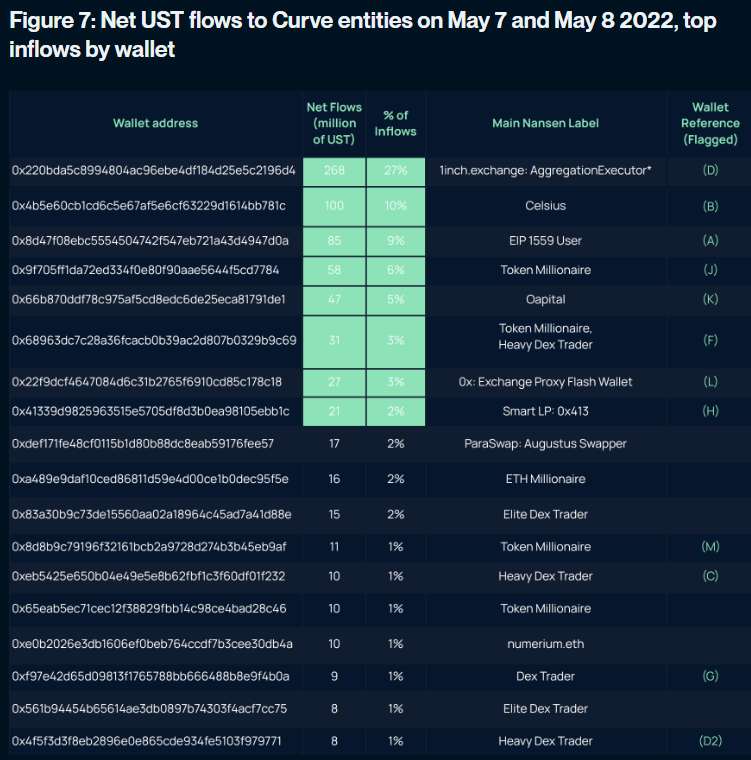
However, the impact of thorough on-chain analysis was not limited to reports from research firms such as Nansen.
Crypto FUD during the collapse of FTX
During the collapse of FTX in mid-November, investors and everyday crypto users alike monitored inflows and outflows, reserve holdings, and even individual Alameda Research wallet movements such as withdrawals from DeFi protocols to cover FTX user deposits. Together, these efforts painted a picture of an institution in much deeper distress than its executives were letting on. Giving many in the community an opportunity to withdraw their funds before the window closed.
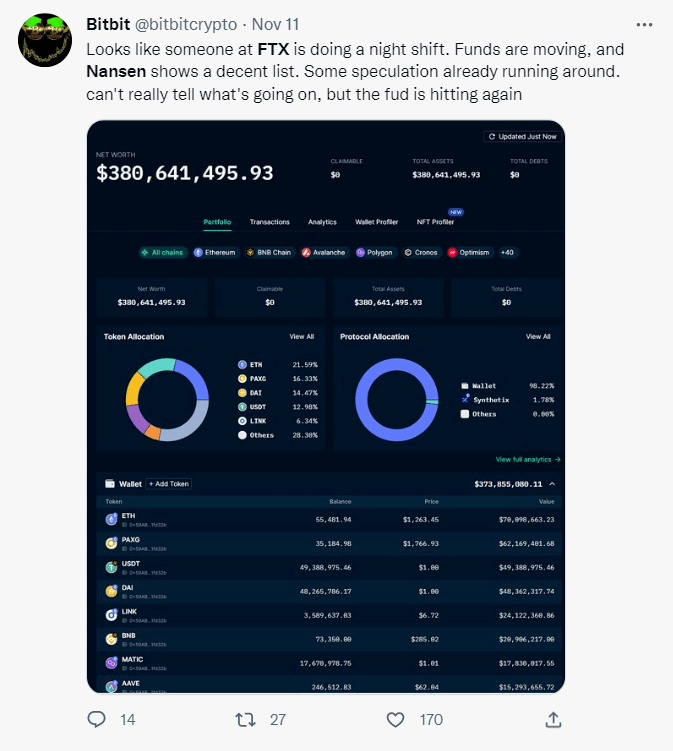
This trend continued as FTX briefly opened up withdrawals for Bahamian residents. Amateur sleuths and professional chain-checkers vetted every withdrawal. Surfacing signs of foul play and laying out a playbook for bankruptcy lawyers to claw back illegally withdrawn funds. For every development in the story of FTX’s demise, analysts caught and traced the updates before traditional and even cryptomedia.
While this citizen journalism movement demonstrated the power of a distributed, on-chain literate analyst community. The traditional media also showed impressive uptake when it comes to the sophistication of their crypto coverage. At the start of the year, when the press would reach out to firms such as CoinMarketCap or Nansen, the questions were rudimentary: analysts would spend hours explaining the basics of a decentralized exchange, self-custody, or the difference between centralized and decentralized lending platforms.
The Binance role
Contrast this lack of fundamental knowledge with the coverage of Binance’s outflows just last week. Sparked by a tweet from a Nansen analyst, reporters from Reuters, Bloomberg, the Wall Street Journal, Forbes, Fortune, CNBC, NBC, the Washington Post, the BBC, and CNN – among many others – quoted on-chain data with surprising literacy. Legacy media can now reliably cover on-chain events, at times even citing specific blockchain addresses. This is a broad, nearly industry-wide improvement on seeing “Etherium” misspelled in major outlets – though that still happens with alarming regularity.
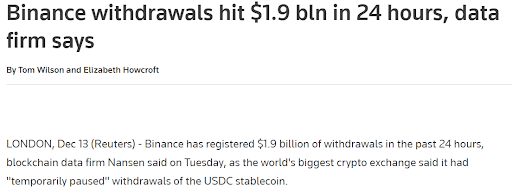
As the traditional media now seems poised to cover the industry with greater sophistication, major crypto institutions are ready to greet them with growing transparency.
Crypto FUD after FTX
After the collapse of FTX, multiple centralized exchanges came forward with a “proof of reserves” system where they would publish the addresses containing customer deposits. Working with the Nansen Portfolio team, users can now audit the holdings of many top exchanges.
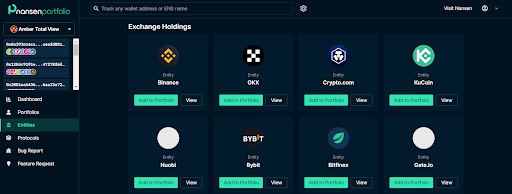
In aggregate, these efforts at transparency from various institutions – and the growing clamor of an investing public increasingly demanding them – may even eventually rise to the level of ‘self-regulation’ that many feel the industry has been lacking for so long.

The year comes to a close
As the year comes to a close, it’s impossible for many investors to look back on the events of 2022 without a sense of frustration. Some of the most ambitious and outspoken members of the community were found to be frauds, and in the face of immense macroeconomic headwinds, one of the most vigorous bull markets in memory collapsed into a devastating bear.
However, looking deeper into the on-chain data, it’s easy to find significant pockets of resilience and vitality. DeFi is hovering above $40 billion in total value locked, and NFTs on Ethereum alone have transacted 8.77 million ETH – just over $10 billion at current prices – in volume this year.
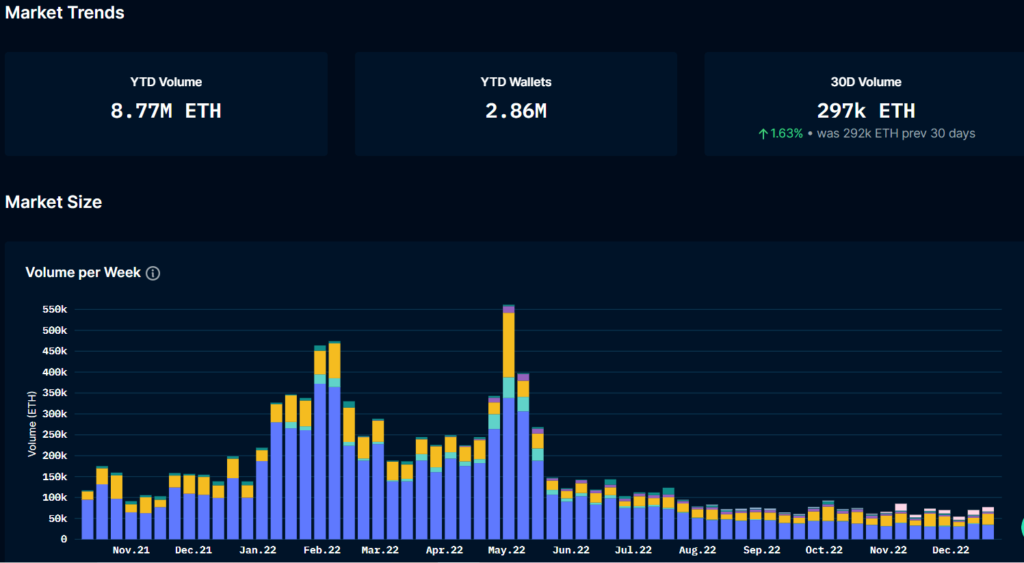
In contrast to previous bear markets, there remains a strong, core crypto user base and a broad array of applications for them to engage in. A thriving, decentralized ecosystem that has now proven to be resilient even to historic washouts and blow-ups from even some of the largest and most influential centralized entities.
These users also have unprecedented analytical tools and resources at their disposal in comparison with previous crypto cycles. From free resources like CoinMarketCap to subscription-based services such as Nansen Pro, the average crypto user weathering the bear is better informed than ever. The quality of the social media chatter reflects that.
It’s impossible to tell how long this bear market will last. The winners of the next bull are already beginning to surface, however, and Nansen stands poised to help them cut through the noise and identify the future of the industry.



